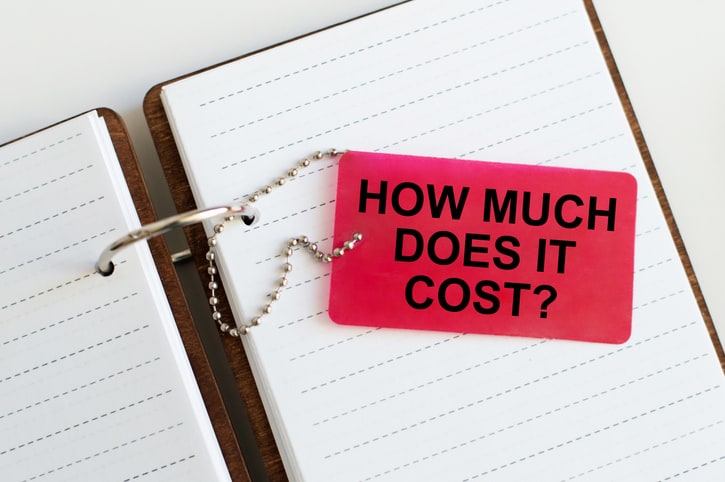Renting your first apartment can be an exhilarating experience; but it also comes with a range of all the costs, including the upfront costs. While some expenses, such as monthly rent and security deposit, are obvious and predictable, others, like move-in costs or the need for additional furniture, may come as a surprise. It is important to be aware of all the costs before renting your first apartment so you can budget accordingly.
The various expenses associated with apartments for rent can quickly add up, far exceeding just the cost of rent. To ensure a smooth move–in process and cover all the expenses when moving into an apartment (including standard living expenses), you should save enough money so you will be paying rent without any difficulty.
The Upfront Costs
To ensure you are able to pay rent within the right time frame (as specified by the property managers or landlord), it is essential to understand the overall apartment bills you need to budget and save for before renting an apartment. So, let’s explore more about these costs before knowing how much rent you will be paying to the landlord once you move into your new apartment.
Application Fees
When applying to rent an apartment, most landlords will charge an application fee. This fee is typically between $25 and $50, but it can reach as much as $100. Plus, you might be required to pay for a background check screening. This usually falls within a similar price range.
As you may submit multiple applications while looking for your first apartment, it is advisable to set aside $100 to $200 to cover these apartment fees. Although these fees are typically non-refundable, in some cases, the application fee can be applied towards your security deposit if your application is accepted.
Security Deposit and the Monthly Rent
The purpose of collecting a security deposit is to deduct a specific amount of money in case of unpaid rent or damages done to the property. This deposit is usually the equivalent of one month’s rent, but it can be lower if you have a good credit score or a co-signer. Besides, if you plan to move-in with a pet, some landlords may require an additional pet deposit.
When renting an apartment, you will also be responsible for paying the first month’s rent and the last month’s rent. The first month’s rent is due upon move-in and is typically required to be paid in full before you can take possession of the apartment.
The last month’s rent is usually due at the end of the lease term, however sometimes it is required to be paid in full prior to moving in. This way, the landlord can use that last month’s rent as a cushion to cover any damages or unpaid bills. So, it is essential to budget for both the first and last month’s rent when planning to move into an apartment.
Moving Costs and Other Costs
Besides knowing how long it takes to move apartments, it is worth knowing about the transportation costs associated with the physical act of moving your belongings. These costs are also a part of apartment costs and might include hiring movers, renting a truck, or buying packing materials.
There are also various miscellaneous expenses that may arise during the rental process. These expenses include things like cleaning supplies, food, and basic household items. If you plan to have cable or internet services, there might be installation fees, too.
It is also essential to budget for regular monthly expenses, including car payments. These miscellaneous costs can add up quickly, so it is important to account for them in your budget and plan accordingly.
How Much Money Do I Need to Rent an Apartment?

How much money is needed to rent an apartment is a critical question. To cover all the costs discussed above, it is advisable to save an amount equal to at least 3-4 months’ rent. This should cover the first month’s rent, the security deposit, and the last month’s rent. However, the exact amount of money you should save will depend on the apartment prices, which might vary greatly.
Follow the 30% Rule
The 30% rule is a guideline commonly used to determine how much to budget for apartment rent. According to the rule, you should not spend more than 30% of your gross income on housing expenses, including rent, utilities, and renter’s insurance.
To calculate how much you can afford for rent using the 30% rule, follow these steps:
1. Determine your gross income: This is the total amount of money you earn before taxes and other deductions
2. Multiply your gross income by 0.3: This will give you an estimate of the maximum amount you should spend on housing expenses each month
3. Subtract any other housing-related expenses: If you have any other housing-related expenses, such as a mortgage, subtract that amount from the total you calculated in Step 2
The Next Step
Compare the total amount you calculated in Step 3 to the cost of rent for the apartment you are considering
If the rent is more than this amount, you will need to consider a less expensive apartment or look for ways to increase your income.
The 30% rule is a guideline. However, the percentage of your income that you can afford to spend on rent can also vary depending on your annual income, pay stubs, household income, and the size of your household. For instance, a single person earning $50,000 per year with no dependents might be able to allocate 50% of their income towards rent and still have enough money left over for other essential expenses.
In another case, a one-parent household with two children earning the same amount of money and spending 50% of their income on rent might not have enough money left over for other necessary expenses. That is why you should assess your specific financial situation when determining how much you can afford to spend on rent.
The 50/30/20 Rule
The 50/30/20 rule is another rent-to-income ratio guideline that can be used to determine how much to budget for rent. This rule suggests that 50% of your income should be allocated towards necessities, 30% towards discretionary spending, and the remaining 20% should be saved or used to pay off debt.
To calculate how much to budget for rent using the 50/30/20 rule, follow these steps:
1. Determine your gross income: This is the total amount of money you earn before taxes and other deductions
2. Multiply your gross income by 0.5: This represents the maximum amount you should spend on necessities, including rent, utilities, food, and transportation
3. Divide the total amount from Step 2 by the number of months in your lease: This will give you an estimate of the maximum amount you should spend on rent each month
The Next Step
Compare the total amount you calculated in Step 3 to the cost of rent for the apartment you are considering. If the rent is more than this amount, you may need to consider a less expensive apartment or look for ways to increase your income. You can also save more so that you can afford your preferred apartment.
Again, we suggest that the 50/30/20 rule is just a guideline. You should assess your finances, other living expenses, and monthly income to know how much you need to rent an apartment so you can choose an apartment complex accordingly.
How to Find Affordable Apartments
You will have to budget less so you can easily find an apartment with a reasonable monthly rent. You can use various online apartment rental sites to search for affordable apartments in your desired area. You can filter your search by price, size, and other factors to find the best affordable apartments that fit within your budget. There might be many apartment complexes that are the best bet for you.
Besides conducting research online, these tips will help find affordable rent apartments:
Negotiate Well or Consider a Smaller Unit
Do not be afraid to negotiate with the landlord on rent or other lease terms. For example, offering to sign a longer lease or pay rent in advance could result in a lower monthly rent. Perhaps, you might not get a good negotiation if you choose the worst month to rent an apartment. Therefore, it makes sense to take advice from a property manager about the average rent before hunting for an affordable apartment.
Downsizing to a smaller apartment can also lower your monthly rent. For example, you can opt for a one bedroom apartment instead of a two bedroom apartment in an apartment complex.
Many apartment complexes offer move-in specials or discounts for signing a lease early. Be sure to ask about any current promotions or specials when inquiring about an apartment. This way, you can even get a discount for a two bedroom apartment.
The Takeaway
Using the 30% Rule and the 50-30-20 Rule can give you an idea of how much you need to rent an apartment.
However, these are simply guidelines. You should also consider your specific circumstances before moving further.
The key is to find affordable apartments so you can easily pay monthly rent, along with affording other utilities.
So, getting your dream apartment home is still possible with a low budget. Calculate your income and expenses today so you can figure out how much you need to rent an apartment. Once done, it is time to move to your new apartment!









